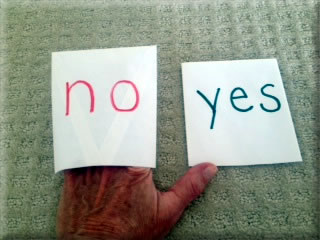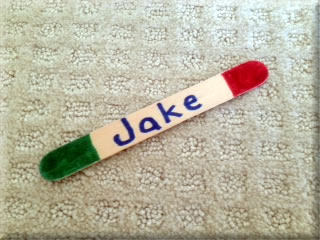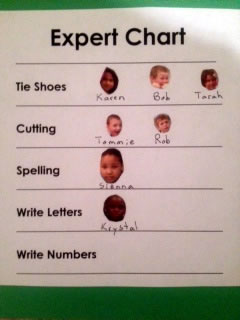Critical Thinkers and Problem Solvers
Note! There are multiple lists of 21st Century Skills. The topics below are suggested by the Partnership for 21st Century Skills. I’ve also included “health literacy” from the Iowa Core framework. Early childhood educators have always been committed to the WHOLE child. I believe WHOLE-heartedly that 21st Century Skills do indeed balance the academic core with children’s social, emotional, and physical well-being.
Critical Thinkers
Learning to ask good questions is a powerful way to improve critical thinking in students of all ages. Here are some tips!
How did you know that? Encourage children to “think out loud.” This will help peers develop higher thinking skills.
Open-ended – Ask open-ended questions, rather than “yes” or “no.”
Avoid judging answers by repeating their response. “Good thinking!” “That’s close.” “I never thought about that before.” “Kiss your brain!”
Give Time (Smile! J) – Help children think about what they want to say and provide for individual differences by asking children to smile if they know the answer.
1-2-3 Tell – Ask a question and then slowly count, “1, 2, 3.” When you say, “Tell,” the children all say the answer.
Thumbs Up Thinking – Tell children to stick up their thumb next to their chest if they have learned something. Stick up fingers for each additional thing you’ve learned.
Whisper & Release – Children whisper the answer in their fists. When the teacher says, “Release,” the students open their fists.
Sign Language (Yes/No) – Teach children the signs for “yes” (wiggle fist in the air) and “no” (touch index and middle finger to thumb like a mouth closing). You can also use cards with “Yes” and “No” written on them.

How Much Do You Know? - Children hold up on their fingers from 1-5 to indicate how much they know about a particular topic.
Pick Sticks – Ask each child to write his/her name on a large craft stick. Color one end green and one end red. Place the red end in the bottom of a can. Ask a question, and then choose a stick. That child gets to answer the question. Return their stick to the can with the red end up.

Think Partners – Divide children up into pairs and let them discuss answers.
Children can also review information by “teaching” a friend what they have learned.
Phone a Friend – If children don’t know the answer, allow them to phone a friend (place hand by mouth and ear like a phone) for help.
*They could also “ask the audience” for help with a question.
Written Response – Ask children to write the answer to a question.
Illustrated Response – Have children draw the answer to a question.
Choral Response – Children answer in unison.
Student Created Questions – Let students generate their own questions for a review.
Problem Solvers
Problem solving requires experimentation of new and familiar concepts while processing information until a solution is reached.
Brainstorm – Brainstorm as a large group, small group, or individually. Brainstorm how to handle common classroom problems like students who break in line. Brainstorm what to do with broken crayons. Brainstorm what to do instead of playing a video game.
KWL – Know, Want to Know, Learned – When introducing a new theme or concept make a list of what the students already know about the topic and what they want to learn about the topic. During the study they can be encouraged to write what they are learning.
*KWL can be done as a class or individually.
Question of the Day – Write a thought-provoking question on the board each day. Take time to listen to children’s responses at the end of the day.
Morning Message – Use a morning message to set classroom goals each day. The morning message can be a road map for what children can expect and instill in them a purpose.
Hint! It’s fun to have a class mascot (stuffed animal or puppet) write the message.
Dear Boys and Girls,
Today is Tuesday, November 5th.
Our story is about Veteran’s Day.
We have a guest speaker who is a veteran.
We’re going to learn how to make tally marks in math.
We also have computer lab this afternoon.
It’s going to be a great day!
Love, Scooter Monkey
Classroom Experts (Karen Stone)
Every student can see themselves as an “expert” with this idea. Make a poster with areas of expertise, such as cutting, writing numerals, writing letters, spelling, tying shoes, etc. Children get to sign their name and put their picture on the poster where they feel they are an expert. Students must consult at least “3 experts” before asking the teacher.

I Know a Scientist – The scientific method provides a useful framework for problem solving. Click here to listen to a short clip. Use your browser's back button to return here.
(Tune: “I Had a Little Turtle” – Lyrics by Dr. Holly)
I know a scientist, (Hold up index finger.)
And you can be one, too! (Point with index finger.)
Here’s the scientific method
So you’ll know what to do.
First you find a question. (Hold up one finger.)
Just take a look around. (Pretend to look around.)
What is it that you want to know?
Now you write it down.
Next you make a guess— (Hold up two fingers.)
It’s called a hypothesis—
About what will happen
When you do your tests.
Now experiment, (Hold up three fingers)
Observe it, write it, too. (Hold up four fingers.)
You’ll need lots of data
To show your guess is true.
Draw your conclusions. (Hold up five fingers.)
Look into any doubts.
Then tell everybody
What you’ve found out!
Survey Says
Let children make individual clipboards for gathering data. You will need corrugated cardboard (recycled, of course!) cut into 12” x 9” rectangles. Attach a butterfly clip to the top of the cardboard to hold paper. Children can decorate their clipboards with markers and then use them to do surveys, write observations, conduct interviews, take notes, etc.